Over my four days with Rodrigo in May, I felt like I covered
the city’s sights quite well, so for me no reason to spend more time in the
city on John’s last two days in Greece, so I planned to drop him off in the
city and continue on my way to central and northern Greece for my last two
weeks in the country. Well, dropping John off at his hotel in the city center required
me to do something I dread and was trying to avoid – driving in Athens traffic.
Fortunately, I was somewhat familiar with the center city layout from my four
days there and was able to follow instructions I drew up for myself on exactly
where to make turns to get him to where he needed to go. To my surprise, I found many of the streets
in Athens to be so narrow my car hardly fit through the cars parked on both
sides, but at least none of the streets along my route were closed. After dropping John off, I backtracked to
where we stayed and continued northwest from there.
The region of central Greece northwest of Athens is
historically known as Boeotia. To me it looks like a kind of arm attaching the
Attica region around Athens and the Peloponnese Peninsula to the rest of
Greece. It is one of the many places in
Greece that’s teeming with small archaeological sites, many of the modern
cities on the sites of ancient ones. I
am enough into ancient Greek history to seek out the major archaeological sites
but not enough so to stop at all the minor ones which in some cases may be
little more that some rubble with historical significance.
The main site of note in this part of Greece is the Hosios
Loukas Monastery, which shares UNESCO World Heritage status with two other
monasteries of similar Middle Byzantine age and architectural style – Daphni in
Athens and Nea Moni on Chios. Hosios Loukas is the largest and most important
of the three. It was originally founded in the 900s by the Venerable Luke, for
which it is named. The monastery’s original church dates from the same time and
is believed to be the oldest in mainland Greece. The larger Catholikon beside
it is almost as old, dating from 1012.
This part of Greece is dominated by Mount Parnassus, the
8,061-foot (2,457 meter) peak that is the highest in the south-central part of
the country, high enough to have ski slopes on its northern side. The scenic town
of Arachova clings to Parnassus’s steep slopes a short distance east of Delphi.
I had actually planned to stay for two nights in Arachova on my abandoned 2020
trip to Greece for the Feast of Saint George, which takes place annually in
town shortly after Easter.
Arachova seems to live off of its visual appeal and
proximity to Delphi. And I must admit that it seems like a much more attractive
place to spend a night when visiting Delphi than the modern tourist town beside
the archaeological site. The narrow lanes, steep streets, and steps between the
levels of town feel completely medieval.
My third stop in the region was a brief one at Thermopylae,
site of the 480 BC battle between Persian forces under Emperor Xerxes and Greek
city states led by King Leonidas of Sparta, as memorialized in the Movie “300”.
The site is very different from what I pictured from the movie but also differs
topographically from the way things were 2,500 years ago. The movie made it
seem like the Greeks met their demise by Persian forces at a mountain pass. In
fact, it was a seaside pass on a low hill that can be seen today. However, there is no longer any sea at the
site, the upper part of the shallow gulf having since been transformed to land
by silt from rivers that enter it.

 Monastery of Hosios Loukas, Greece
Monastery of Hosios Loukas, Greece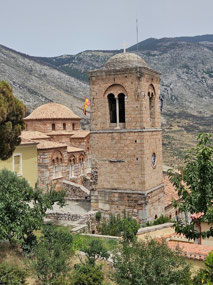
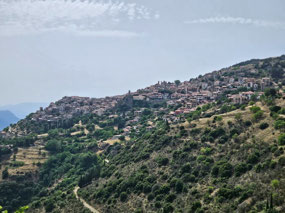
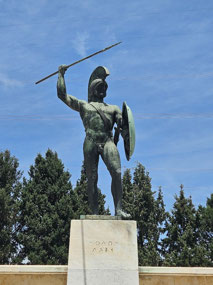


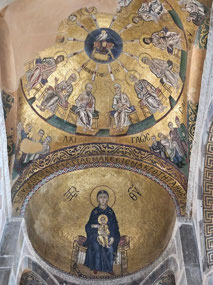
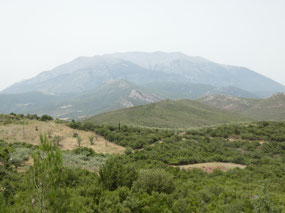



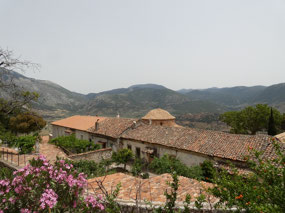
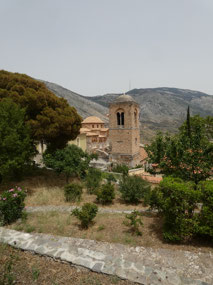
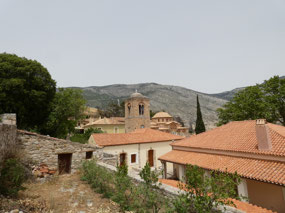
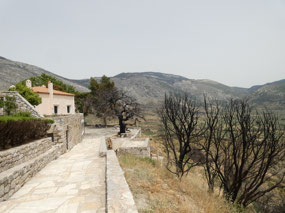
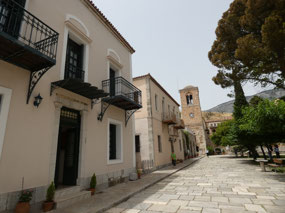
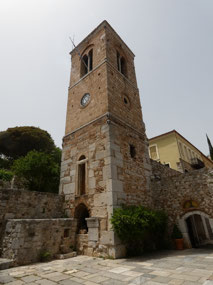
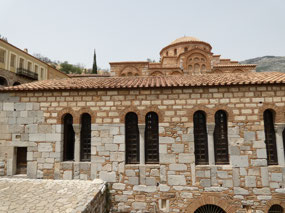
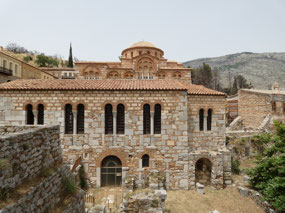
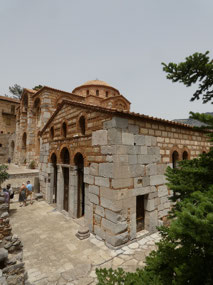
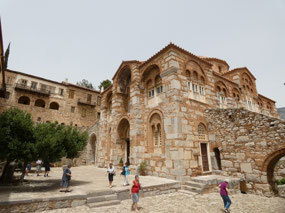
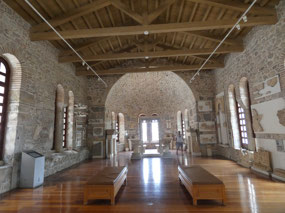
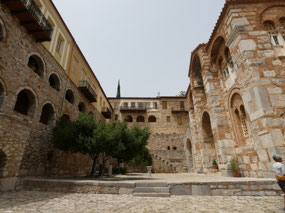
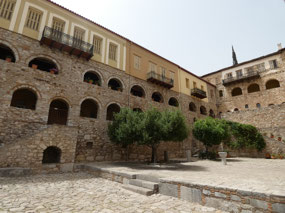
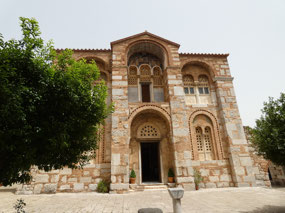
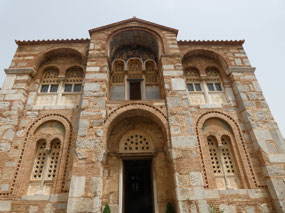
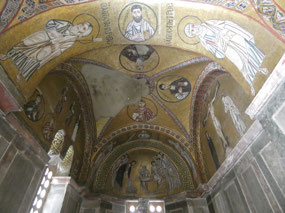
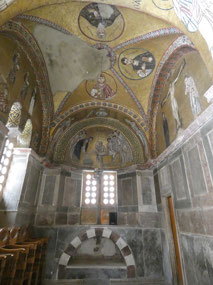
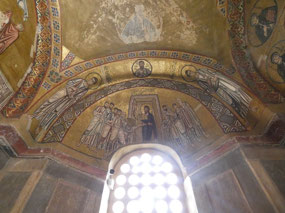
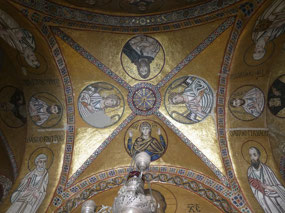
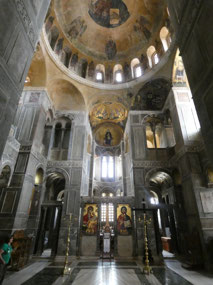
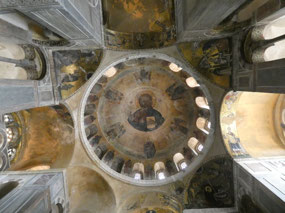
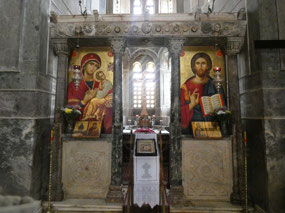
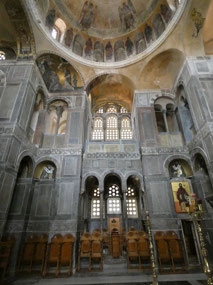
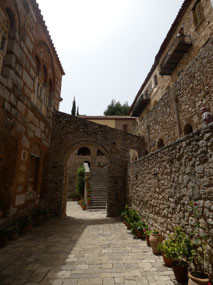
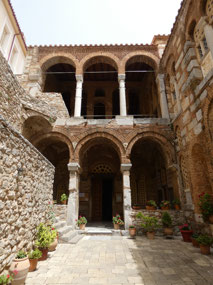
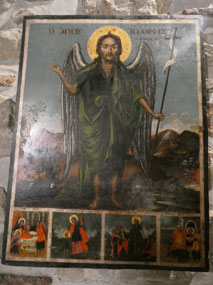
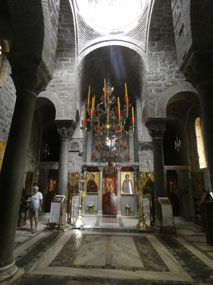
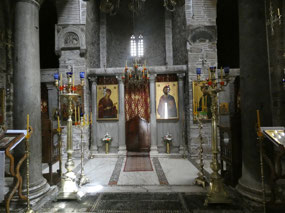
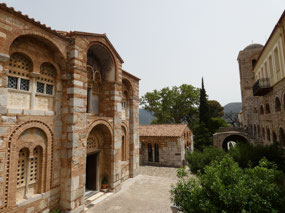
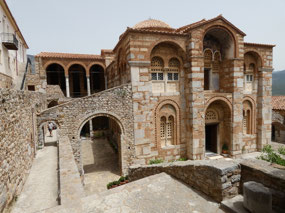
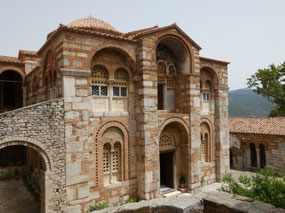
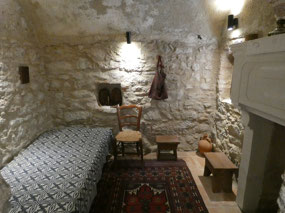
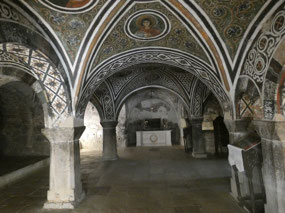
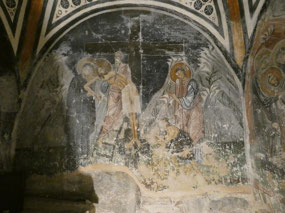
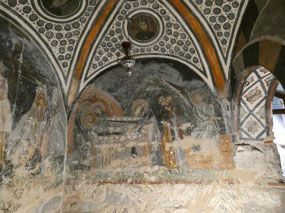
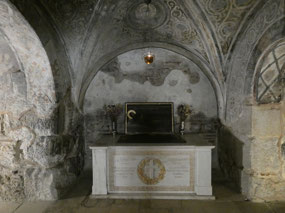
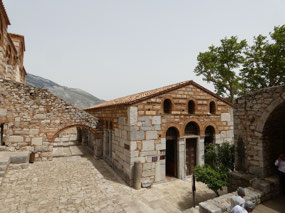
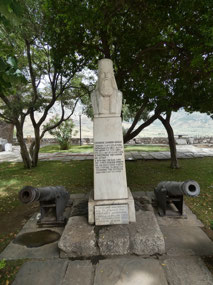
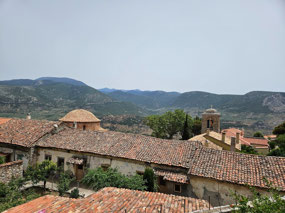
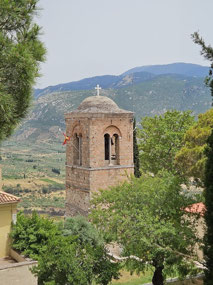
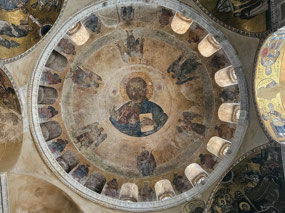
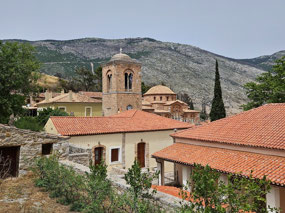
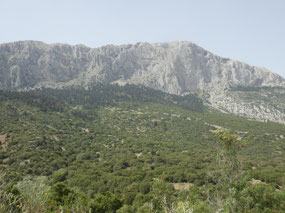
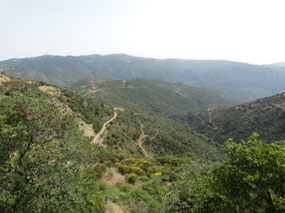
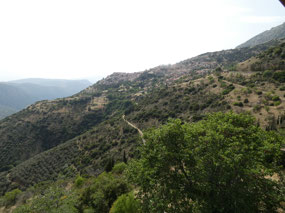
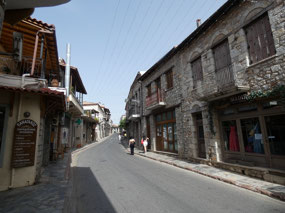
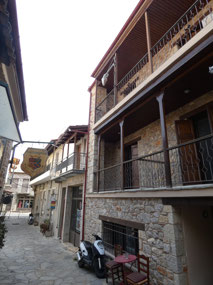
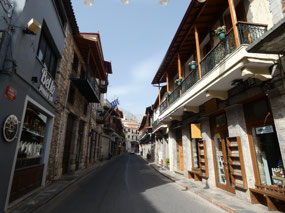

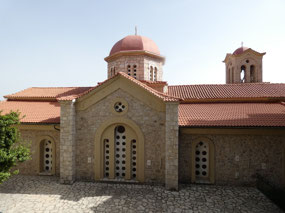
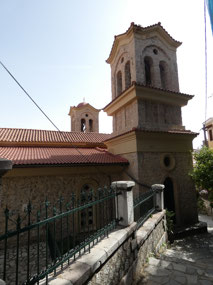
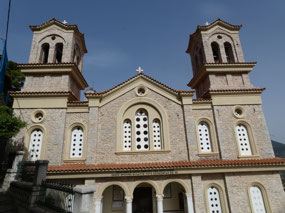
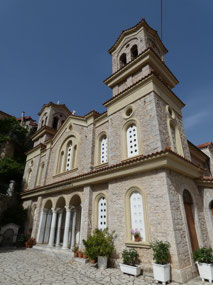

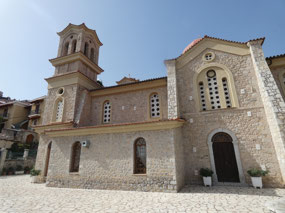
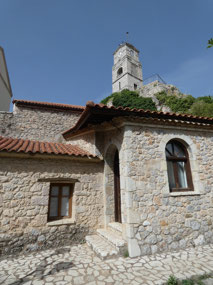
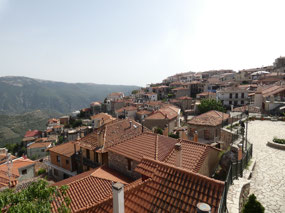
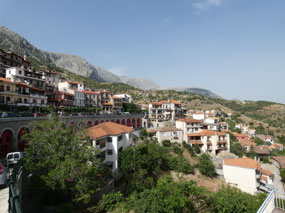
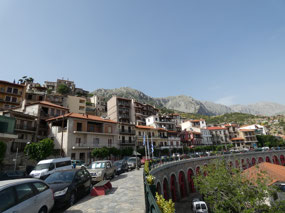
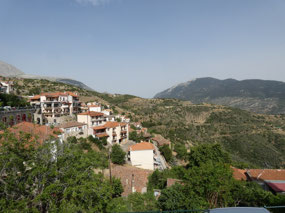
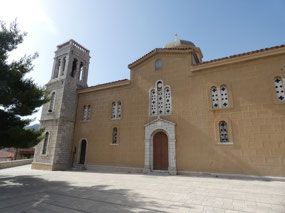
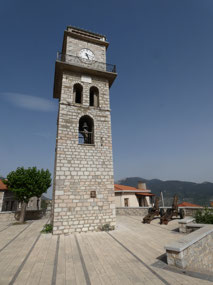
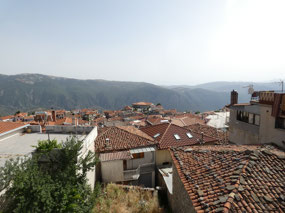
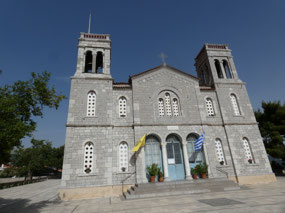
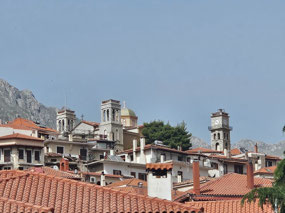
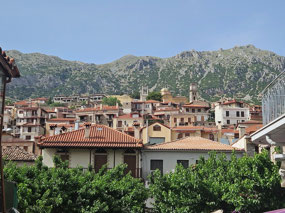
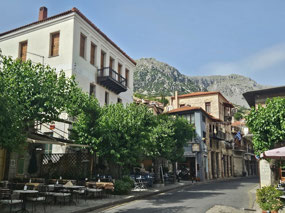
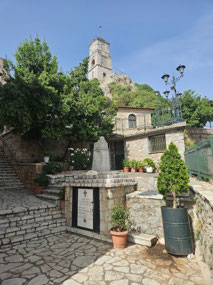
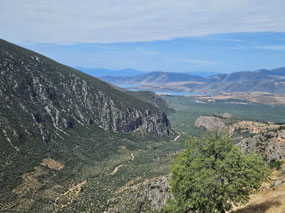
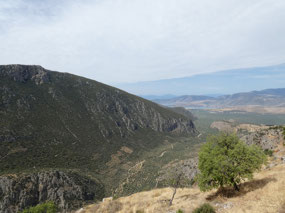
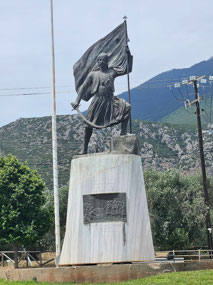
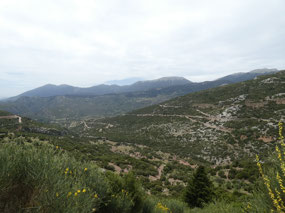

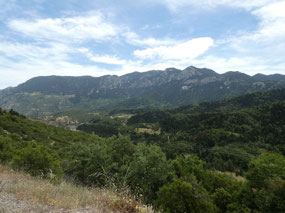
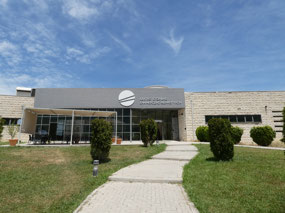
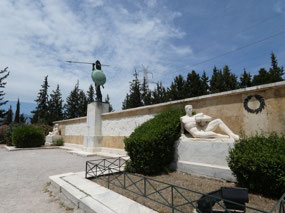
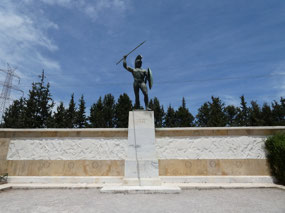
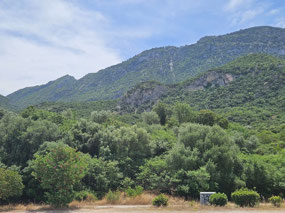
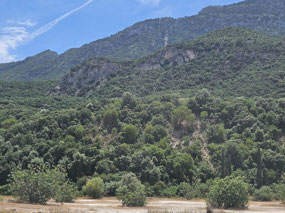
2025-05-23